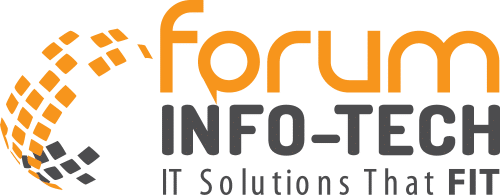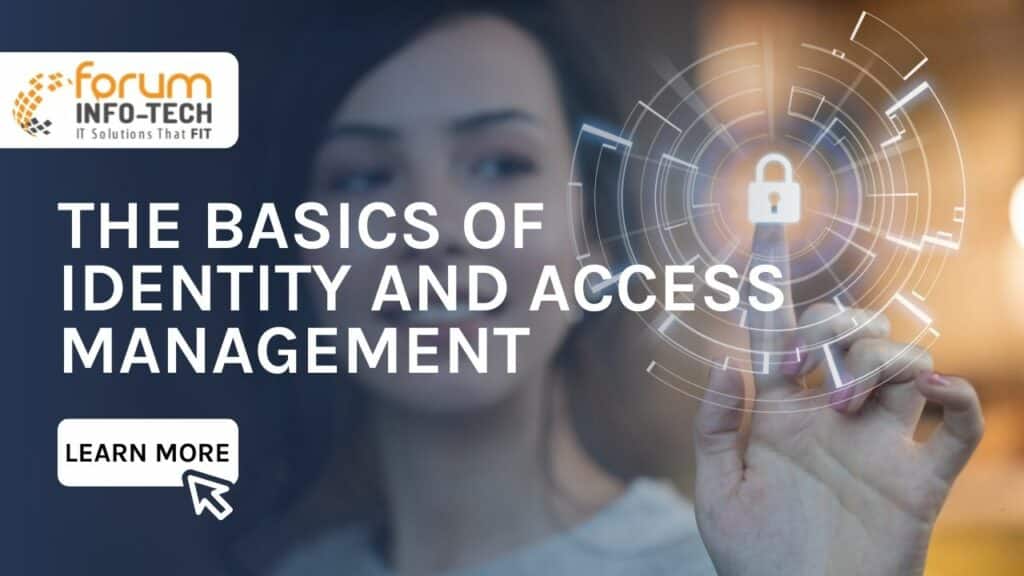Identity and access management makes it possible to manage electronic and digital identities through a framework of policies, technologies, and business proposals. With the help of the identity and access management framework, the information technology (IT) executives can control and check user access to important information inside their organizations.
Multiple technologies such as single sign-on systems, multifactor authentication, privileged access management can secure the identity and profile data of people and data governance functions, making sure that only relevant information is shared. Identity and access management can be provided to an organization by a third-Party vendor through a hybrid model or cloud-based subscription.
Elements of Identity and Access Management
On a very basic level, identity and access management contain the following elements:
- The first one is how individuals are identified in an organization’s system.
- The next is how roles of employees are identified and how different employees are assigned different roles.
- The third one is how newly recruited employees are added to the system, and their roles are also updated, also how fired employees are removed from the organization’s system.
- The next element is assigning different levels of access to different employees or groups of employees.
- Finally, identity and access management protect the system from foreign entities and protect sensitive data.
Basic components of identity and access management
With the help of an identity and access management framework, the IT department can control which employees in an organization have access to critical information. Identity and access management products give role-based access control, which lets administrators decide which employees will have access to what data based on their roles in the firm. Identity and access management systems also provide a complete directory that gives oversight and outlook on all the aspects of the organizations’ employee base.
Identity and access management can also manage digital identities of applications as well devices to create trust. identity and access management technologies are made to help employee provisioning and set-up easier as these technologies help reduce the time it takes to complete these processes as well as help decrease the number of errors employees do while doing these processes.

Important terms to know about identity and access management
Access management: refers to the processes and technologies used by an organization to monitor and control the network.Access management includes features such as authorization, security auditing, and authentication are part of the systems for on-premises and cloud-based systems.
Active Directory (AD): Microsoft developed AD as a user- identity directory. Since Microsoft develops it, it is included in windows and hence deployed widely.
Context-aware network access control: this is a policy-based method used to grant access to users based on what context they want to access the network with. For example, if a user has not been using a whitelisted IP, they will not access websites as network access control would immediately block them from them.
Credential: it is a way to identify the user to grant access to the network. Some types of credentials include public key infrastructure certificates, biometric information, and a user’s password.
De-provisioning: this is the process of removing someone’s identity from the ID repository and taking away their privileges to access the network.
Digital identity: This is the identity of a user who has their names and other descriptions on it and their excess privileges to the network.
Entitlement: it is the set of elements that identify a verified security principal’s access principles and privileges.

Identity as a Service (IDaaS): for an organization that dwells on a cloud system or and premises system, Cloud-based IDaaS presents an access and identity management system for them.
Identity lifecycle management: this term refers to all the technologies and processes it takes to update and maintain digital identities. Identity life cycle management includes provisioning, managing customer credentials, attributes and entitlements, identity synchronization, and de-provisioning.
Identity synchronization ensures that multiple identity stores should have the same result for a particular digital identity.
Lightweight Directory Access Protocol (LDAP): for a directory service such as Microsoft’s AD, LDAP is an open standards-based protocol that accesses and manages the directory distribution.
Multifactor authentication (MFA): MFA requires customers more than just a single factor such as username and passwords to access the network. It would take the user one extra step to enter the network, like conforming their identity through email confirmation or typing the code sent through SMS, or even using Biometric to confirm their identity.
Password reset: It is a characteristic of an ID management system that gives users the freedom to change their passwords to what they want to keep. This characteristic leads to administrators being released from the job of setting passwords for the employees. Employees often use a browser to reset their passwords, where the application asks the employee a form of verification before letting them change it.
Privileged account management: this phrase refers to auditing accounts, managing them, and granting data access based on their privileges. A privileged user, for instance, has the right to add, remove and edit rights of other users since they have administrative access to the systems.
Risk-based authentication (RBA): it is a form of authentication that adjusts authentication requirements based on the situation the user tries to attempt at authenticating. For instance, if an employee is trying to access companies’ network from an IP address or another geographic location that they have not previously used to gain access to, the system may ask them for a few extra authentication requirements before giving access to the system.
User behavior analytics (UBA): UBA, which is also at times grouped with entity behavior analytics and then known as UEBA, examines the patterns of how employees behave and thus automatically by itself applies algorithms and analysis to detect certain abnormal behavior which could turnout to be a potential security threat in the future. UBA is different from other security technologies as they only focus on tracking devices or security events.
Provisioning: The process identities of employees are created, their access privileges are specified, and finally, their identities are added to the system’s ID repository.
Single sign-on (SSO): it Is a type of access control that allows multiple systems to be accessed by a single username and password. Through single sign-on, a user can access a system or multiple systems with a single credential.

Types of digital authentication
With the help of identity and access management, organizations can also execute various digital authentication methods to prove digit identity and help permit access to corporate resources.
Unique Passwords: a very common digital authentication method that almost all organizations require has a unique password. These unique passwords must be long and complex and variations of numbers, letters, and symbols. Since these passwords are very complex, many employees find it very difficult and hard to remember them.
Pre-shared key (PSK): Another common type of digital authentication used by many companies is Pre-shared passwords. Only employees who are supposed to have access to certain resources know the password, which lets them access those resources, such as a shared WIFI password where only the branches know the WIFI password of the branches WIFI. This method is less secure and cumbersome if the organization changes its password frequently to ensure that unwanted people do not access critical information.
Behavioral authentication: organizations use behavioral authentication to protect highly sensitive data from people who should not access it. Identity and access management use AI, which uses granular and analyzes keystroke dynamics or mouse-use characteristics that analyze the behavior of employees who have access. If their behavior falls out of the place even a little, the AI automatically locks down the whole system.
Biometrics: The more modern identity and access management systems in place in organizations use biometrics to authenticate more precisely. For example, they collect a range of biometric identities from employees like voices, fingerprints, palms, irises, faces, and sometimes even DNA. Biometrics is a more effective way to limit access in comparison to passwords.
But suppose companies do decide to collect biometrics. In that case, they should consider the ethics, especially in areas like how they access and store biometric data, providing employees a choice to opt for it and not enforce it on them, and understanding what represents private data and having rules about sharing it with other employees in the organization.
However, biometric come with their flaws and dangers. If biometric is hacked, hackers can access employees’ biometric identities, which is very difficult to recover. Also, since this technology is fairly new, it can be very expensive to implement on a large scale with additional hardware, training costs, and software cost to consider.

Final thoughts
Identity and access management has proven itself to be extremely useful. It has a wide range of aspects and features. It has established its usefulness as in the modern age with a lot of technology, and there is also a threat of extreme breach in security. The main idea of identity and access management is to ensure complete safety as we step into the fourth industrial revolution.

